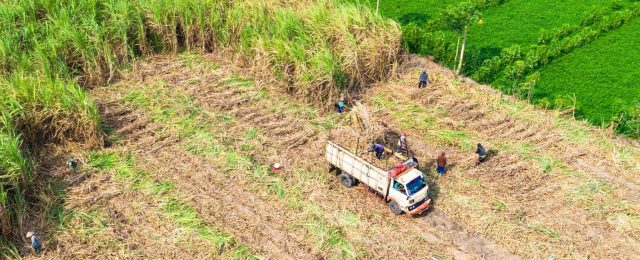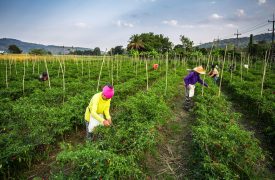See 2021 Food and Agriculture Benchmark
Environment | Leading practices from the 2021 Food and Agriculture Benchmark

What does good performance look like?
This is a question our food and agriculture team often receives from companies, allies and other stakeholders. Taking a holistic approach, companies in the benchmark are assessed across the measurement areas of governance and strategy, environment, nutrition and social inclusion. Companies are expected to set policies, strategies, targets or take specific action on each topic within these areas, all of which have specific (data) requirements. These requirements are based on societal expectations, existing and widely accepted reporting standards, best available science and guidance from experts, including research on existing initiatives and current practices. Translated into indicator scoring guidelines our methodology lays bare these requirements and why companies need to take action on each topic.
Food systems have major impacts on our health, society and the environment. Private sector action is crucially needed to address these challenges. The methodology for the Food and Agriculture Benchmark serves as a roadmap to guide companies through this transformation by identifying the areas of attention alongside clear expectations for companies. The 2021 Food and Agriculture Benchmark has shown that all companies are on a journey and stepping up efforts is needed even for the best performers. This publication aims to shine a light on leading practices on key topics that we have found in the benchmark. It provides a more practical understanding of what ‘good’ performance looks like, across topics as well as sectors and companies.
Below you find an overview of selected examples, chosen to illustrate leading practices across each measurement area and topic. These examples are intended to inspire and initiate conversations with companies on their performance. It is not an exhaustive list, but one that will be updated and supplemented moving forward. In addition, the benchmark’s data set provides a full overview of company scores against all 45 indicators, beyond the leading practice examples highlighted below.
Environment
This measurement area addresses the key issues of sustainable food production. Food production is a key contributor to climate change, deforestation, biodiversity loss and freshwater depletion, with almost half of global production relying on exceeding the planet’s environmental boundaries. The private sector is the largest player in food production and is therefore well positioned to transform the food and agriculture system to be more sustainable. Based on the performance of companies assessed in the Food and Agriculture Benchmark, below are a collection of leading company practices across various indicators in the environment measurement area.
Reducing GHG emissions
Around a quarter of global GHG emissions are caused by food production, with animal-based foods contributing 75% to that figure. Moreover, 17% of the global food system’s GHG emissions are directly from agricultural activities and an additional 7–14% from land-use changes. Without significant adjustments to agricultural practices, GHG emissions from agriculture are likely to increase 15–20% by 2050.
Protecting soil health and agrobiodiversity
A recent report by the FAO shows how critical soils are to achieving the Sustainable Development Goals (SDGs). Hosting over a quarter of global biodiversity, soils play an important role in maintaining food and water security, air quality, climate mitigation, human health, supporting agricultural livelihoods, and many more.
Eliminating food loss and waste
Recent reports reveal that approximately 1.2 billion tonnes of food is lost on farms alone, during and after harvest. Further down the value chain, food waste is a major contributor to emissions, accounting for around 8–10% of global greenhouse gas emissions, in addition to contributing to growing food insecurity.
Conclusion and next steps
Leading practice examples are meant to inspire and instigate conversations with companies on their performance. With changing global contexts and (scientific) developments and progress around the understanding of many of the relevant topics in the benchmark, leading practices will change over time. The benchmark and its methodology will reflect this changing environment in which food and agriculture companies operate. Our methodology will evolve over time, as will the benchmark. We invite our allies, companies and other stakeholders to join the conversation or reach out to the food and agriculture team to keep abreast of our activities and next steps.


